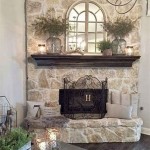How to Become an Interior Decorator
Interior decorating is a dynamic and rewarding field, focusing on enhancing the aesthetic appeal and functionality of interior spaces. Unlike interior design, which often involves structural modifications and architectural planning, interior decorating concentrates on the stylistic elements that bring a room to life – furniture, textiles, color palettes, and accessories. A successful interior decorator possesses a keen eye for detail, a comprehensive understanding of design principles, and excellent communication skills. This article outlines the key steps and considerations for individuals aspiring to establish a career in interior decorating.
### Developing a Strong Foundation in Design PrinciplesA solid understanding of design principles is paramount for any aspiring interior decorator. These principles serve as the building blocks for creating visually appealing and harmonious spaces. Key design principles include:
Balance: This refers to the distribution of visual weight within a space. Symmetrical balance creates a formal and structured feel, while asymmetrical balance introduces a more dynamic and informal arrangement. Achieving balance ensures that no single element dominates the room, contributing to a sense of equilibrium.
Proportion and Scale: Proportion relates to the relationship between different elements within a design, while scale refers to the size of an object in relation to its surroundings. Understanding these principles is crucial for selecting furniture and accessories that are appropriately sized for the space, preventing an overcrowded or underwhelming aesthetic.
Harmony and Unity: Harmony is achieved when all the elements in a room work together to create a cohesive and pleasing visual experience. Unity implies a sense of oneness and consistency, ensuring that the various components of the design complement each other. This can be achieved through consistent color palettes, recurring motifs, and complementary textures.
Emphasis: Every well-designed room should have a focal point, a visually dominant element that draws the eye. This could be a striking piece of artwork, a grand fireplace, or an unusually shaped piece of furniture. The focal point adds interest and provides a visual anchor for the space.
Rhythm: Rhythm in design creates a sense of movement and visual interest. It can be achieved through repetition of colors, patterns, shapes, or textures. Different types of rhythm, such as regular, random, and alternating rhythm, can be used to create varying degrees of visual stimulation.
These principles can be learned through various avenues, including formal education, online courses, and practical experience. Continuously studying and analyzing successful interior spaces is crucial for developing a strong intuitive understanding of these principles.
### Acquiring Relevant Education and TrainingWhile a formal degree is not strictly required to become an interior decorator, it can significantly enhance your knowledge, skills, and credibility. There are several educational paths available, each offering different levels of depth and specialization.
Associate's Degree in Interior Design or Interior Decorating: An associate's degree provides a foundational understanding of design principles, space planning, color theory, and materials. These programs typically cover basic drafting skills and introduce students to industry-standard software.
Bachelor's Degree in Interior Design: A bachelor's degree offers a more comprehensive and in-depth education. These programs delve into advanced design concepts, architectural history, sustainable design practices, and building codes. Students gain experience in creating detailed design plans and managing complex projects.
Certificate Programs: For individuals seeking a more focused and condensed education, certificate programs in interior decorating or design offer targeted training in specific areas, such as space planning, color consultation, or furniture selection. These programs are often shorter and more affordable than degree programs.
Online Courses and Workshops: Numerous online platforms offer courses and workshops on various aspects of interior decorating. These can be a valuable resource for supplementing formal education or for individuals who prefer a self-paced learning environment. Topics may include specific design styles, software tutorials, or business management skills.
In addition to formal education, practical training is essential. Internships or apprenticeships with established interior decorators or design firms provide invaluable hands-on experience, allowing aspiring decorators to learn from seasoned professionals and build their portfolios.
### Building a Professional Portfolio and NetworkA strong portfolio is crucial for showcasing your skills and attracting clients. It should be a carefully curated collection of your best work, demonstrating your versatility, creativity, and attention to detail. Consider the following points when building your portfolio:
Showcase a Variety of Projects: Include projects that demonstrate your ability to work with different styles, budgets, and space types. This could include residential projects, commercial spaces, or even smaller-scale projects like room makeovers or furniture refinishing.
High-Quality Photography: Invest in professional photography to capture your projects in the best possible light. High-resolution images are essential for showcasing the details and nuances of your designs. Before-and-after photos can also effectively illustrate the transformative impact of your work.
Include Detailed Descriptions: Provide detailed descriptions of each project, outlining the client's needs, your design process, and the specific elements that you incorporated. This allows potential clients to understand your approach and appreciate the thought behind your designs.
Digital Portfolio: Create an online portfolio that is easily accessible and visually appealing. This can be a website or a profile on a platform like Houzz or Instagram. Regularly update your portfolio with your latest projects.
In addition to building a portfolio, networking is essential for establishing a successful career in interior decorating. Attend industry events, join professional organizations, and connect with other designers, architects, contractors, and suppliers. Building relationships with these individuals can lead to valuable referrals and collaboration opportunities.
Actively participating in the design community can also enhance your visibility and credibility. Consider volunteering your time for design-related projects or offering your expertise to local organizations. This can help you build your reputation and gain valuable experience.
Furthermore, developing strong communication and interpersonal skills is essential for building rapport with clients and understanding their needs. Active listening, clear communication, and the ability to translate a client's vision into a tangible design are critical for success in this field.

Become A Certified Interior Decorator Certification And Career Info

Become An Interior Decorator Career Guides By Fabjob

How To Become An Interior Decorator With Pictures Wikihow

How To Become An Interior Designer
How To Become An Interior Designer Markel Direct

How To Become An Interior Decorator All You Need Know Salary Com

How To Become An Interior Designer Decorator

How To Become An Interior Decorator

How To Become An Interior Designer Insights Archive Fairfield University News

How To Become An Interior Decorator The Ultimate Guide Qc Design School
Related Posts







